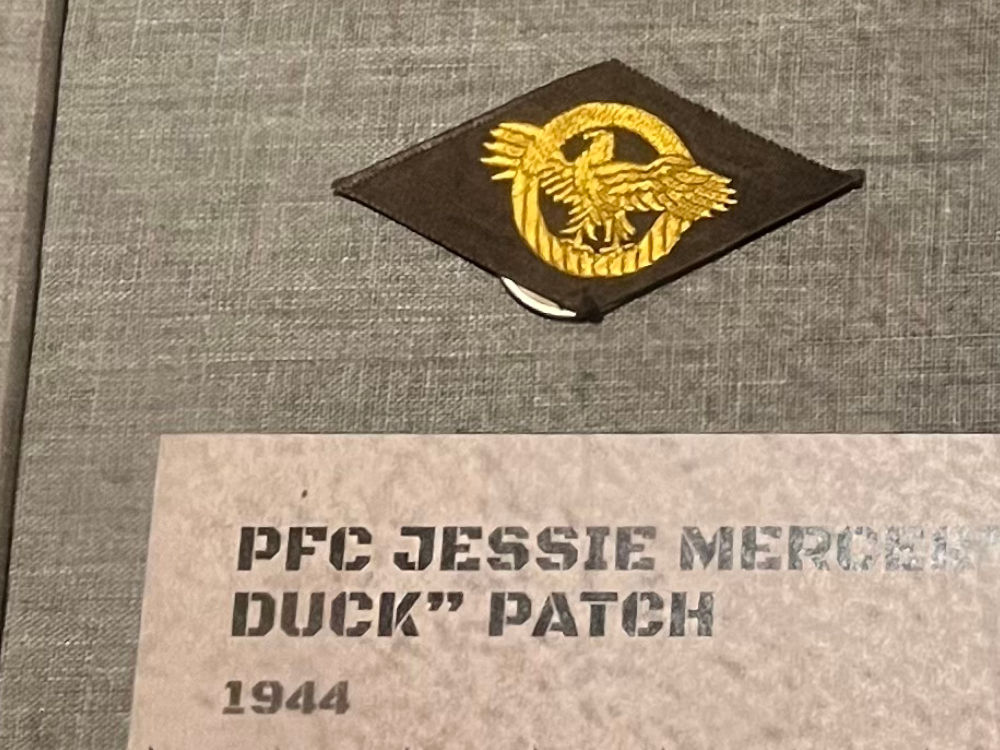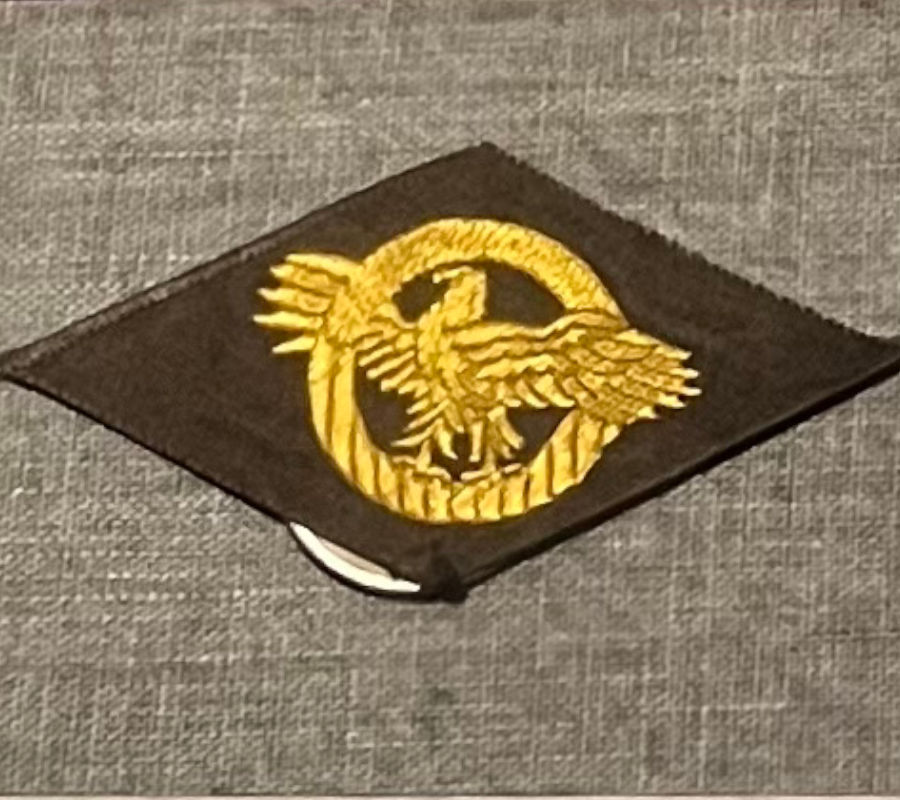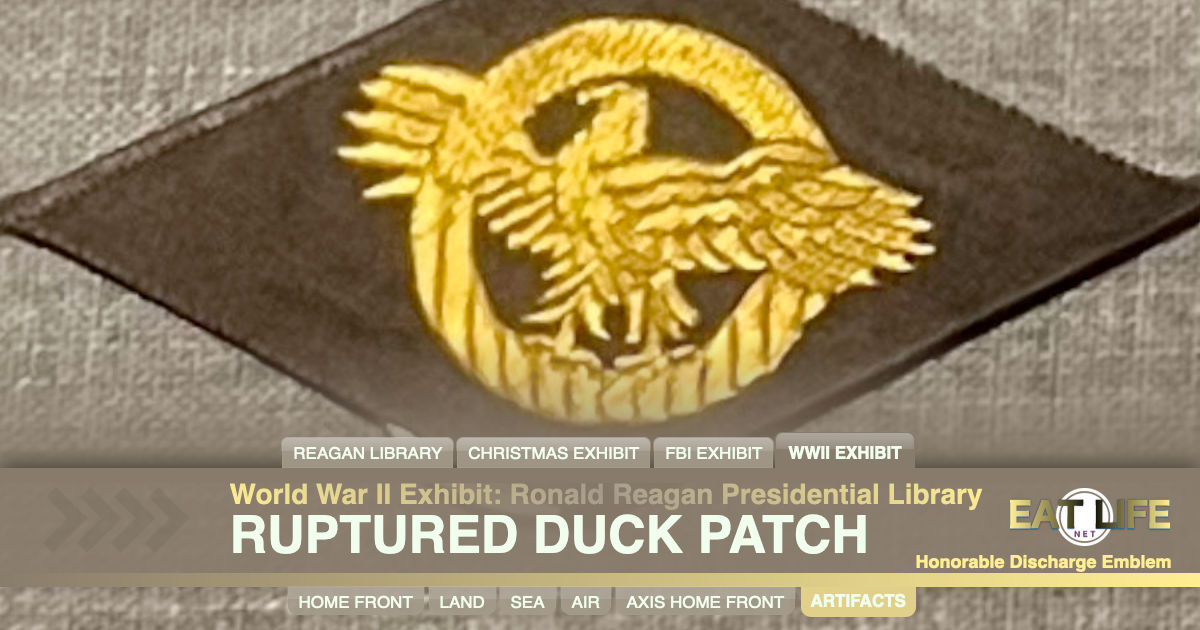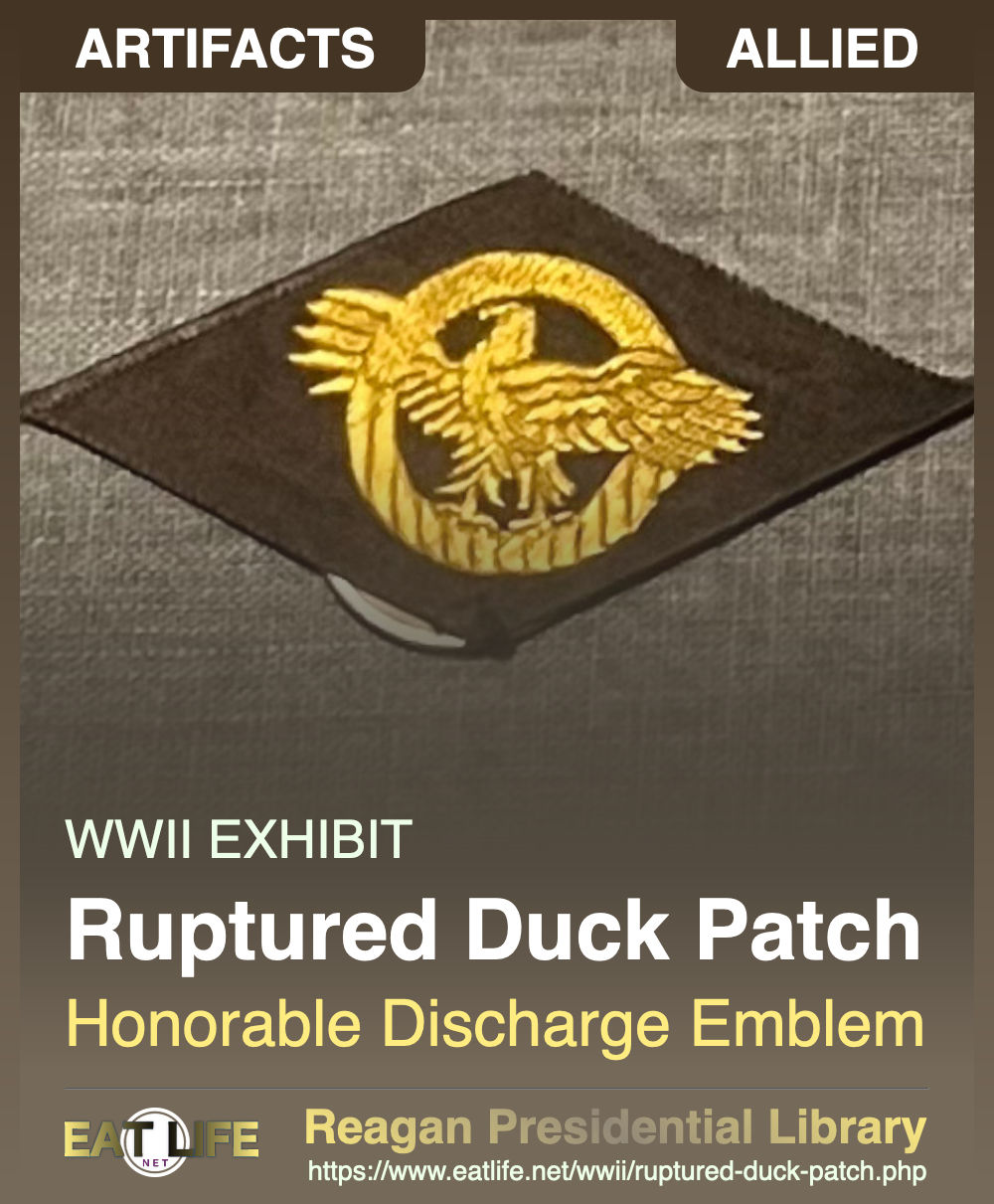
1944
While serving at Fort Robinson as a motor pool driver and parts clerk, PFV Mercer drove German POWs to their work sites and soldiers into town. She met her soldier husband there, and whom she married in January 1946. Their reception was held in the WAC day room with a wedding cake baked by a German POW.
WIKIPEDIAThe Honorable Service Lapel Button
Ruptured Duck
The Honorable Service Lapel Button, colloquially called "Ruptured Duck" by the members of the military, was a lapel button awarded for honorable Federal military service between 1925 and 1946. The award, designed by Anthony de Francisci, was issued for wear on the left lapel of civilian clothing upon discharge.The U.S. departments of War and the Navy issued the lapel button to eligible servicemen and women upon discharge. It was made of gilt brass, except during metal shortages during which it was made of gilt plastic. Service members who received the plastic version were later allowed to trade it in for the brass version.
Even though it depicts an eagle, the design of the eagle seems to depict its breast bursting through the button as though it has ruptured, and the eagle was believed by some to have been so poorly designed as to resemble a duck rather than an eagle. The term "ruptured duck" was coined to refer to it on that basis.
The Honorable Discharge Emblem, designed to be worn on the military uniform, served as proof the wearer was an honorably discharged veteran returning from service during World War II. It was unofficially utilized as an identifier to railroad, bus, and other transportation companies who offered free or subsidized transportation to returning veterans.
During World War II, enlisted members of the armed forces were forbidden to possess civilian clothing unless they were under specific orders to do so. This not only made desertion more difficult, but also ensured that any captured service member would be treated as a prisoner of war under the rules of war. (Soldiers captured in combat zones in possession of civilian clothing were liable to be treated as spies and summarily executed.) In pre-war conditions, discharged veterans typically donned civilian clothing when returning home, but this was logistically difficult during wartime and immediate post-war America. Approximately 16 million men and women served in the uniformed services during the crisis, most of whom were scheduled to be discharged within a short period of time during the general demobilization at the end of the war. Clothing was already in short supply due to cloth rationing, and the immediate clothing needs of millions of returning veterans threatened to crash an already overtaxed system. The Honorable Discharge Emblem, embroidered onto a cloth lozenge and sewn over the right pocket of the military uniform, allowed the veteran to continue to wear the uniform for up to 90 days subsequent to discharge.
World War II veterans wore the Honorable Service Lapel Button on the left lapel of civilian clothing many years after the war.
In 1945, as baseball's military veterans returned to ballparks throughout the country, the United States government wanted to extend the emblem to those who had served their country.At the National League's midsummer meetings held on July 12, 1945, in Washington, D.C., Chicago Cubs owner Philip K. Wrigley presented the other teams' representatives with the emblems as supplied by the War Department. Even Wrigley was not impressed with the emblem, calling it "poorly designed and really a terrible thing, but nevertheless, that is what they have got."
Wrigley – with the War Department's desire to "publicize recognition of the discharge emblem" – suggested increasing the size of the emblem and placing it on the shoulders of the uniforms worn by returning veterans.
The government's goal was to have this in place by July 4, 1945, though there were regulations which delayed implementation.
Shortly after the National League approved use of the emblem, American League president William Harridge notified his circuit's teams that the Cubs were using the patches. If they chose, American League clubs could do the same.
Alva Bradley of the Cleveland Indians returned the emblem sample Harridge sent, noting in his letter that "I would rather not have the Cleveland Ball Club get into this angle. I think it just as well that this be forgotten until the war is over."
The New York Yankees felt otherwise. Pitcher Red Ruffing, who spent his time in the service in non-combat duty, came back to Yankee Stadium in 1945 and sported the emblem on his sleeve. Catcher Aaron Robinson joined Ruffing in wearing the patch.
Many Major League Baseball teams wore special uniform patches throughout World War II, but the "ruptured duck" patch was a source of pride for those returning ballplayers who served in the conflict. Though there does not seem to be any note of enmity between those who served and wore the patches and those who did not serve or served and chose not to wear the patch, those who sported the "ruptured duck" on the baseball diamond set themselves apart in more ways than one.









